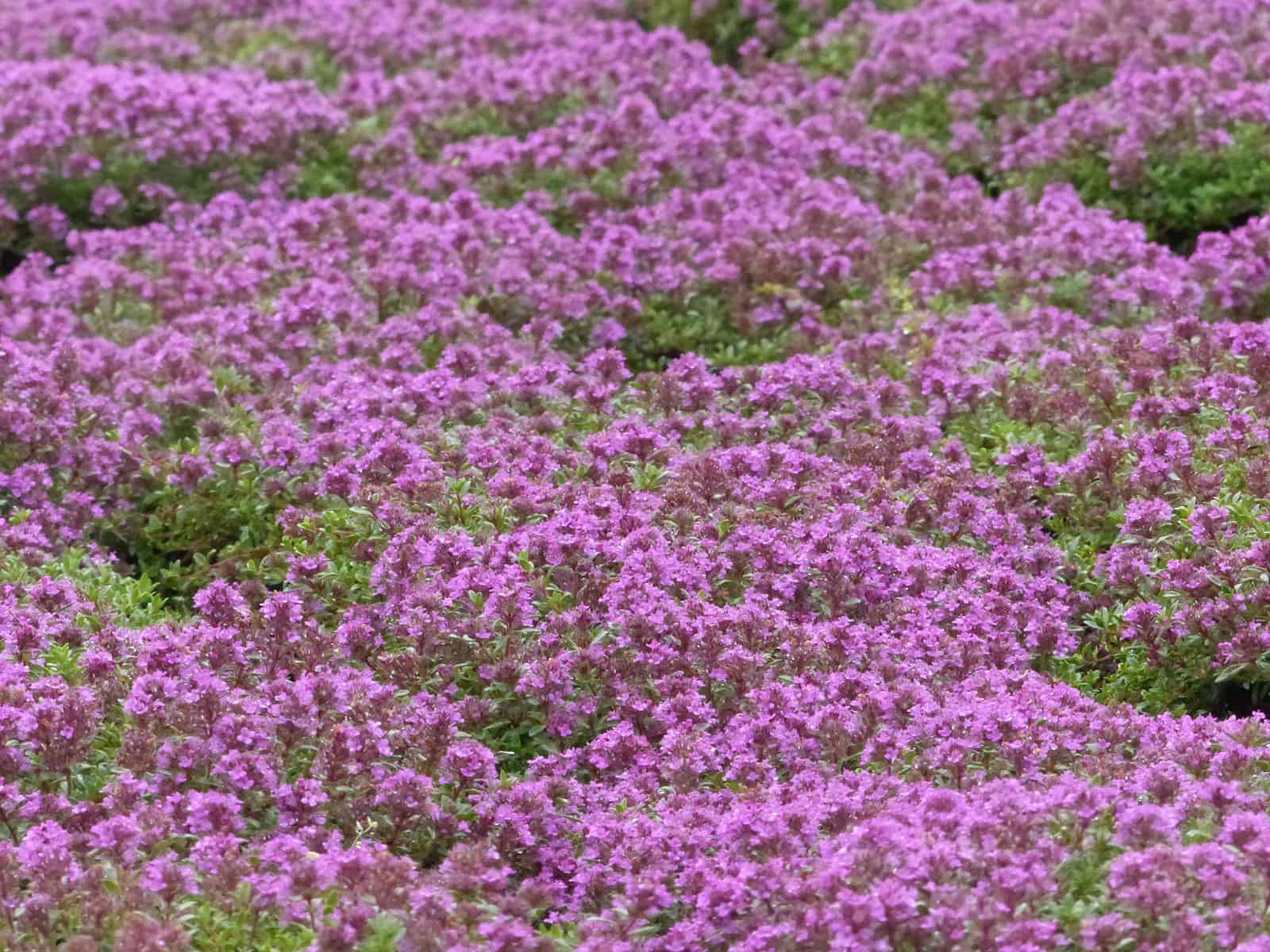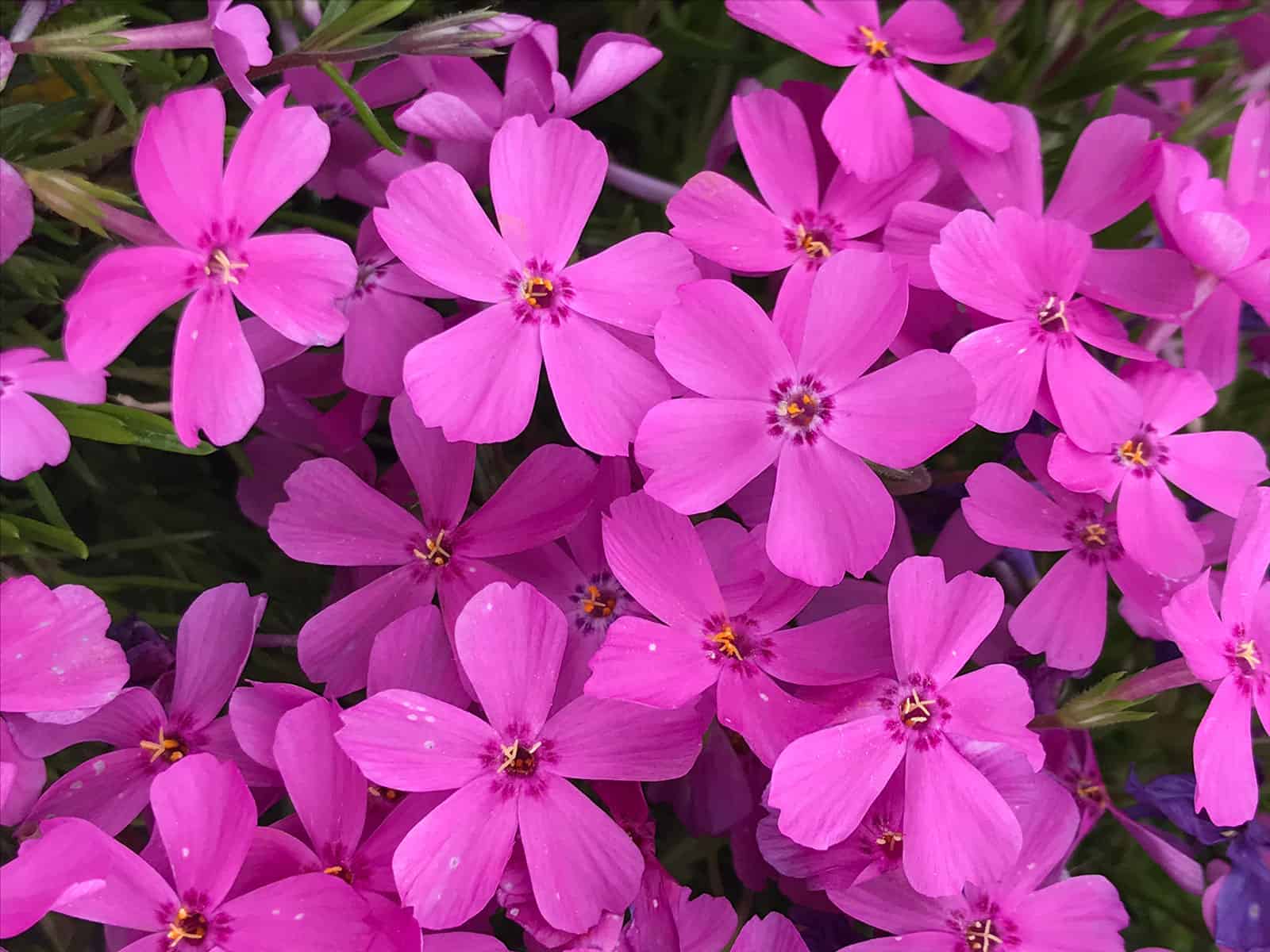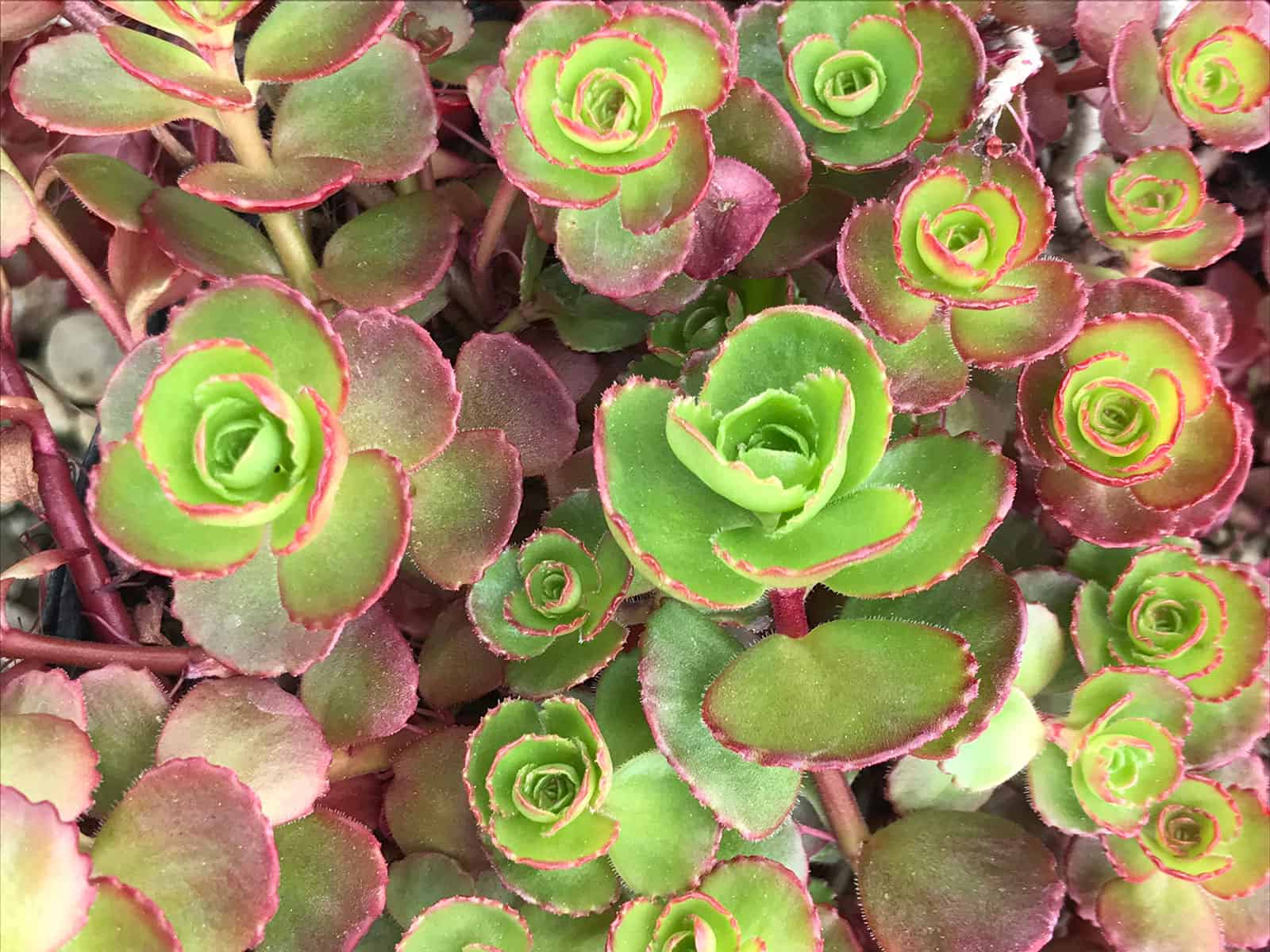This lovely Thyme forms a dense mat of dark green, semi-evergreen leaves. Excellent for use in between steppers or as a lawn alternative. Once established it is drought tolerant. In early summer it is smothered with magenta-red flowers.

This lovely Thyme forms a dense mat of dark green, semi-evergreen leaves. Excellent for use in between steppers or as a lawn alternative. Once established it is drought tolerant. In early summer it is smothered with magenta-red flowers.

A stunning lime-yellow Coral Bell that can withstand the heat and humidity! Creamy white blooms add summer interest. They form low clumps of foliage that create a stunning contrast in the garden. Great for perennials borders and containers.

Liriope spicata is a species of low, herbaceous flowering plant from East Asia. Common names include creeping lilyturf, creeping liriope, lilyturf, and monkey grass. This perennial has grass-like evergreen foliage and is commonly used in landscaping in temperate climates as groundcover. Creeping lilyturf has white to lavender flowers which produce single-seeded berries on a spike in the fall. It is one of the most popular groundcovers in the southeastern United States and areas with a similar climate.
Creeping lilyturf is a rhizomatous, grass-like perennial which forms clusters of narrow, arching, glossy, dark green leaves (to 1⁄4 inch (0.64 cm) wide) typically growing 9 to 15 inches (23 to 38 centimetres) high. Erect flower spikes with small, white to pale lavender flowers arise, somewhat hidden, among the leaves in late summer. Blackish berries develop in fall and often persist through winter. Roots have prominent rhizomes and frequent tubers. A cultivar exists with variegated leaves.
Creeping lilyturf looks very similar to another common species in the genus—lilyturf (Liriope muscari). Creeping lilyturf can be distinguished by its rhizomatous root system (in contrast to the diffused root system of lilyturf), its less prominent flower spike being partially within leaves (lilyturf has a longer spike extending well above leaves), and its generally narrower and shorter leaves when compared those of lilyturf.

The Catmint ‘Little Titch’, ‘Nepeta ‘Little Titch’, is one of the smallest in the Catmint family. With a bloom time of May through September, it is more upright and compact than many on the market today.
‘Little Titch’ requires full sun and will tolerate morning shade. It has a plant height of 8-10″ and a plant spread of 12-15″.
The abundant lavender blue flowers have light fragrances with mid-green leaves.
Use ‘Little Titch’ in front of border, as an edging plant, or in rock gardens.
This Nepeta is drought and seaside tolerant and attracts hummingbirds.
For best results, deadhead after each bloom time. This plant was discovered at Four Seasons Perennials in Great Britain.
This plant may also be known by its common name, Persian catmint.

Campanula carpatica, the tussock bellflower or Carpathian harebell, is a species of flowering plant in the family Campanulaceae, native to the Carpathian Mountains of Central Europe. It is a low-growing herbaceous perennial, with long stems bearing solitary blue bell-shaped flowers. It was introduced to the Royal Botanic Garden at Kew in 1774 by Nikolaus Joseph von Jacquin. Several cultivars in shades of white, blue, pink and purple, have been developed for garden use.

There are many selections of Moss Phlox, all of them forming a low mound or cushion of dark green needle-like leaves, smothered by tiny flowers in late spring. This is a vigorous variety, with a showy display of deep lavender-blue flowers. Exhibits excellent disease resistance. Clip plants lightly immediately after blooming to encourage a dense habit. Wonderful in the sunny rock garden, for edging, or in mixed containers. Clumps may be ripped apart and divided in early fall, after 3 to 4 years. Requires good drainage. Drought tolerant, once established.

There are many selections of Moss Phlox, all of them forming a low mound or cushion of dark green needle-like leaves, smothered by tiny flowers in late spring. This variety produces a showy display of hot-pink flowers and has a medium-fast growth rate. Clip plants lightly immediately after blooming to encourage a dense habit. Wonderful in the sunny rock garden, for edging, or in mixed containers. Clumps may be ripped apart and divided in early fall, after 3 to 4 years. Requires good drainage. Drought tolerant, once established.

A terrific low evergreen groundcover for sunny areas with poor dry soil. This forms a trailing mat of succulent golden-yellow leaves. Clusters of yellow starry flowers appear during the summer. When planted in containers or on a wall this develops a beautiful cascading habit. Plants may be pruned back at any time if they get too large. Foliage sometimes develops beautiful amber tones in the autumn and winter. Does well in large rock gardens where the plants can be given room to spread. Best with occasional to no foot traffic. Drought tolerant. Registered with COPF: royalty required for propagation.

Culture: Easily grown in acidic, average, dry to medium moisture, well-drained soils in full sun. Tolerates some light shade. Likes sandy or gravelly soils. Tolerates poor soils. Needs good soil drainage to perform well. Drought tolerant. Avoid overwatering. Plants may be sited 12” apart when grown as a ground cover. Easily propagated by cuttings or division. Plants spread easily (root where nodes touch the ground). Cut a leaf from a healthy sedum with about 1-2″ of stem and plant the stem with the leaf above soil. Plants are evergreen in warm winter climates.
Noteworthy Characteristics: Sedum spurium, commonly called Caucasian stonecrop or two row stonecrop, is a low-growing, sprawling, mat-forming sedum or stonecrop that is commonly grown as a ground cover. It is native to the Caucusus. This is an evergreen plant that typically rises only 3-6” tall but spreads to 18-24” wide by creeping, branching stems that easily root at the nodes. Thick, succulent, opposite, obovate, flattened leaves (to 1” long) with wedge-shaped bases are toothed near the ends. Leaves are medium green with reddish-tinged margins. Lower stem leaves are deciduous, but newer leaves near the stem tips are evergreen, typically turning deep burgundy in fall for overwintering. Leaves are arranged in two rows along the stems, hence the sometimes used common name of two row stonecrop. Tiny, 5-petaled, star-shaped, pinkish-red flowers (to 3/4” diameter) in dense, 4-branched inflorescences (to 4-6″ tall) bloom from late spring to mid-summer (June-July in St. Louis) atop upright reddish flower stems. Flowers are attractive to butterflies.
Genus name comes from the Latin word sedeo meaning to sit in reference to the general growing habit of many of the sedums (they sit and sprawl over rocks).
Specific epithet means false. Its use here is unclear.
‘Fuldaglut’ is a low-growing, mat-forming, maroon-leaved cultivar that grows 2-3” tall but spreads to 18” wide. Leaves are attractive throughout the growing season. Foliage is semi-evergreen in St. Louis winters.
Problems: No serious insect or disease problems. Slugs and snails may appear. Watch for scale.
Garden Uses: Rock garden or small area ground cover. Border fronts. Stone wall pockets. Sunny banks or slopes. Edging. Containers. Best when planted in groups or massed as a ground cover.

This tough, drought-tolerant species has glossy deep green leaves and, in early summer, half-inch golden yellow flowers that open from pink buds. It grows to about 6 inches tall and a little wider and makes a good groundcover.
Noteworthy Characteristics: Long-lasting, star-like, golden yellow flowers.
Care: Grow in well-drained soil of moderate fertility that is neutral to slightly alkaline. Full sun.
Propagation: Take stem cuttings or root leaves in early summer. Start seed in fall. Divide in spring.
Problems: Mealybugs, scale insects, slugs, and snails can be problems.
Read more: http://www.finegardening.com/stonecrop-sedum-kamtschaticum#ixzz53nFjuIzC